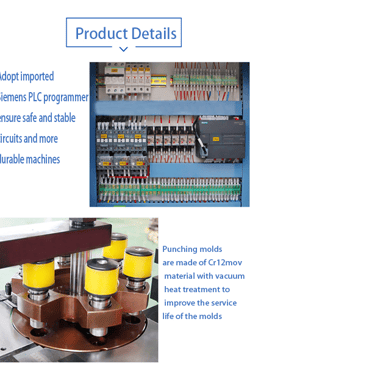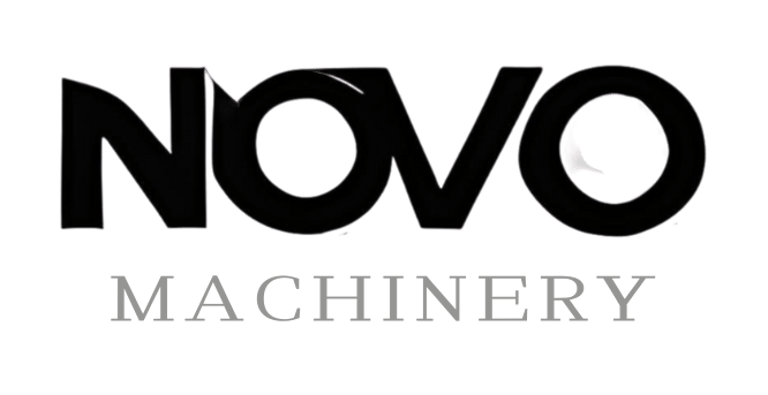Precision CNC Busbar Machine | Electrical Equipment OEM
Discover high-quality electrical equipment and precision CNC busbar machines from leading OEM manufacturers. Enhance your production efficiency with our state-of-the-art technology.
7/15/20255 min read


Understanding CNC Busbar Machining
Computer Numerical Control (CNC) busbar machining refers to a specialized manufacturing process that utilizes computer-guided tools to produce precise busbars, which are a critical component in electrical systems. Busbars are conductive metal bars or strips that facilitate the transmission of electrical power or signals. They play a crucial role in distributing electricity in substations, industrial plants, and various electrical equipment, ensuring the efficient performance of electrical systems.
The intricacies of CNC busbar machining lie in its ability to deliver high precision and consistency, which are paramount in the production of electrical components. Traditional manufacturing methods often presented challenges, including variability in product quality and longer production times. However, with the advent of CNC technology, manufacturers have witnessed significant advancements. This technology allows for automated and error-free operations, leading to enhanced production efficiency and reduced lead times.
CNC busbar machining employs advanced tools and machinery that are programmed with detailed specifications, allowing for the accurate cutting, bending, and shaping of busbars. The evolution from manual machining methods to CNC processes has transformed the landscape for Original Equipment Manufacturers (OEMs). The precision afforded by CNC machining results in components that meet the stringent quality standards required in the electrical domain. Additionally, this technology accommodates custom designs and specifications, catering to the diverse needs of different industries.
As the demand for reliable and efficient electrical systems continues to rise, the importance of CNC busbar machining cannot be overstated. It not only ensures the production of high-quality components but also enables manufacturers to remain competitive in a rapidly evolving market. Thus, the adoption of CNC technology has become indispensable for OEMs seeking to enhance their operational capabilities and product offerings.
The Importance of Precision in Electrical Applications
In the realm of electrical manufacturing, precision is not merely an advantage; it is a fundamental requirement. For Original Equipment Manufacturers (OEMs), particularly those involved in machining busbars and other critical components, the implications of precision extend far beyond aesthetics. Imprecise machining can lead to a cascade of issues affecting the performance, reliability, and safety of electrical systems, thereby jeopardizing both the end product and the reputation of the manufacturers.
When precision in machining is compromised, the fit and function of electrical components can become severely affected. For instance, if a busbar is inaccurately measured or cut, it might not adequately conduct electricity, leading to overheating or failure in the system. Such scenarios not only impair the functionality of the equipment but can also pose significant safety hazards, including electrical fires or equipment damage. The long-term ramifications of these failures can result in costly recalls and loss of customer trust.
Numerous real-life examples highlight the importance of accurate machining in electrical applications. In a notable incident, a manufacturer experienced widespread failures in their electrical distribution systems due to imprecisely machined busbars. The defective components led to intermittent electrical faults, forcing several businesses to operate with unreliable power — causing significant productivity losses and safety risks. Ultimately, the manufacturer faced legal repercussions and a damaged reputation, which could have been avoidable through a commitment to precision.
Moreover, the current trends in the electrical industry underscore a growing demand for performance efficiency, greater energy conservation, and enhanced safety standards. OEMs are increasingly held accountable for ensuring that their products meet stringent quality benchmarks. As such, investing in precision CNC machining not only streamlines production processes but also mitigates risks associated with imprecise machining. The pursuit of accuracy is essential for maintaining compliance with regulatory standards and fostering long-term customer satisfaction.
Benefits of CNC Busbar Machining for OEMs
The application of CNC (Computer Numerical Control) busbar machining offers numerous advantages for Original Equipment Manufacturers (OEMs) in the electrical equipment sector. One of the primary benefits is enhanced accuracy. CNC machining allows for precision fabrication, ensuring that busbars are manufactured to exact specifications. This level of accuracy minimizes the risk of errors, which is essential for maintaining performance and reliability in electrical systems.
In addition to accuracy, CNC busbar machining significantly increases manufacturing efficiency. Traditional machining methods may require multiple setups and extensive manual adjustments, leading to longer production times. In contrast, CNC machines operate under pre-programmed instructions, allowing for rapid and repeatable production runs. As a result, OEMs can meet tight deadlines while maintaining high-quality standards, thus optimizing their production workflows.
Cost reduction is another critical factor. While the initial investment in CNC technology may be substantial, the long-term savings can be significant. CNC machining reduces labor costs associated with manual processing and minimizes waste through precise material usage. Furthermore, the ability to produce complex shapes and designs without the need for specialized tools or fixtures contributes to lower overall manufacturing expenses.
The capability to accommodate small batch production is particularly advantageous in the diverse electrical equipment manufacturing landscape. OEMs often require tailored solutions that address specific client demands or niche markets. CNC busbar machining facilitates these needs by allowing for the quick and cost-effective production of custom busbars in varying quantities, supporting flexibility in manufacturing.
Overall, the advantages of CNC busbar machining—such as enhanced accuracy, increased efficiency, reduced production costs, and the ability to create complex designs—make it a non-negotiable choice for OEMs looking to stay competitive in the evolving electrical equipment industry.
Future Trends and Innovations in CNC Busbar Machining
The landscape of CNC busbar machining is transitioning rapidly due to a multitude of technological advancements and innovations. One of the most notable trends is the increasing integration of automation within manufacturing processes. Automation not only enhances precision but also allows for higher production volumes, which is critical for electrical equipment OEMs operating in an increasingly competitive market. With CNC busbar machining systems that leverage automated processes, manufacturers can expect reduced lead times and minimized human error, essential components in ensuring product reliability.
Furthermore, the advent of Industry 4.0 is reshaping manufacturing paradigms, driving the need for intelligent manufacturing systems that can communicate and adapt in real-time. Smart CNC machines equipped with machine learning algorithms can optimize machining parameters dynamically, thereby improving production efficiency and enhancing the quality of the busbars produced. The integration with the Internet of Things (IoT) allows for proactive maintenance messages and real-time monitoring, ensuring that potential issues are identified and rectified before they escalate into significant production disruptions.
In addition to automation and smart technologies, advancements in materials science are expected to influence the CNC busbar machining sector. New alloys and composite materials that boast higher conductivity and enhanced mechanical properties are on the horizon. This necessitates the adaptation of existing CNC machining technologies to accommodate these novel materials, which may display different machining characteristics compared to traditional metals.
Ultimately, staying competitive will require electrical equipment OEMs to embrace these innovations, not just in CNC busbar machining but across their manufacturing operations. Adapting to these trends will not only improve efficiency and lower costs but also enhance product performance and reliability, essentials in meeting the growing demands of the electrical equipment market. As the industry shifts towards these advancements, the ability to innovate will be paramount for OEMs aiming to remain relevant and successful.
Innovate
Leading manufacturer of busbar processing equipment solutions.
Contact
Support
+131 2713 4627
© 2025. All rights reserved.
